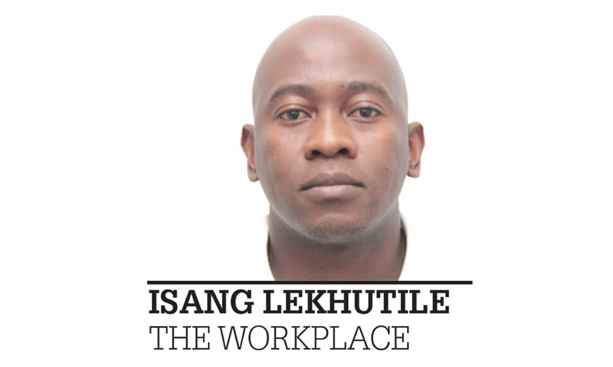A Christian Lawyer in the 1870s penned a now popular song “It is well with my Soul” after so many sad incidents of his life. History informs us that the original composer was Philip Bliss and together with Horatio Gates Spafford worked on the lyrics of the song. This prominent American Lawyer and Presbyterian Church leader, Elder Horatio, lost his family when their ship was struck by an iron sailing vessel and sunk. His businesses were also engulfed by fire and lost almost the entire estates.
This is half the story of his life which I am sharing. A figure had appeared on the ledge before the bloody window screen of my passenger door and screamed “Ao o siame?”, “Ao golahetse?” The figure struck and broke my window when suddenly I responded “Ke tseela gore ke siame”. Just few days or rather a week ago, my life almost changed on the A1 road, just by Glen Valley turn when my car hit two fast running cows in the inner lane. The five minutes I was trapped in the car, was like 10 hours in a dark room and those who have been involved in an accident will agree that it’s not easy to share the actual details as is. And, let me confess. I felt the world crunching and seeing my own demise in this world. Just minutes after being freed from the car and appreciating the whole accident scene….I just said, “It is well”. This is part of life we need to live and face. You ache with the need to convince yourself that you do exist in the real world that you’re a part of all the sound and anguish, and you strike out with your fists and say “I am part of the fiasco called life journey”. The ability to learn, accept and quickly adjust is being agile. Soon after the accident, I appreciated what happened, moved on with life and found a quick way to manage the loss and change of life without a car. The accident and change of jobs inspired me to focus my topic on Learning Agility and Organization.
My topic on learning Agility is influenced by changing jobs and positions. I have always had so much interest in Employee Development. Learning is a tool which if properly used by organisations can best prepare them for future developments. Learning agility is increasingly important in a fast-changing world. According to Newhall, to succeed in today’s complex business world, leaders must be adaptable, resilient and open to innovative thinking. I am convinced that in the next decade or decades the landscape of jobs will change and some jobs. Research shows strong link between Learning Agility and the performance of the organisation, leaders and teams. For organisations and individual executives, if they want to create an agile organisation they must strive to face and plan for uncertainty, behaviours of teams and learning of the emerging trends of workforce. In times of change, leaders need to be more agile than ever. Adapting to new business strategies, working across cultures, dealing with temporary virtual teams and taking on new assignments all demand that leaders be flexible and agile.
Exactly what is Learning Agility, what does it mean to Human Resources? David Hoff defines Learning Agility as finding yourself in a new situation and not knowing what to do – but then figuring it out. Learning Agility describes how naturally learning new things come to each individual. It is knowing what to do when you don’t know what to do. David Hoff explains that high levels of Learning Agility also mean that individuals can think critically in first time situations and are not afraid of unfamiliar territory. They can strive when presented with different situations and can easily use their previous experiences to ensure that the experiences they deal with in the future are better shaped. Human Resources are normally tasked with leading change management and learning. A learning Agility culture needs to be facilitated and led by Human Resources for organisational culture change. Human Resources functions should measure and understand the Learning Agility of existing employees and job candidates.
Tomas Chamorro-Premuzic said Learning Agility is critical for today¹s leaders: if leaders can’t learn from experience and acknowledge past mistakes to avoid repeating them, they will become a liability. Today’s corporate environment moves fast and organisations not willing to adapt will be left behind. In conclusion, what separates the once successful, from the still successful is the ability to meet these challenges head-on and take these lessons forward. The American philosopher Eric Hoffer said “in times of change, learners inherit the earth; while the learned find themselves beautifully equipped to deal with a world that no longer exists.” In short, it’s those who are primed to learn and ready to adapt that have the best chance at success. It is clear that learning agility is part of any successful leader’s repertoire. The willingness and ability to learn from experience influences not only the extent to which we grow as individuals but also how we are perceived by others. By the way, soon after the accident the traffic officers who arrived at the scene were so helpful and I would like to extend my appreciation to Broadhurst Police Traffic Division officers. Statements were taken and cautioned like any other driver, but most importantly the services they rendered were superb.
Lastly, as the Easter holidays are upon us, this time I have planned to be at the cattle post. John 11: 25 reads thus “I am the resurrection and the life”. Anyone who believes in Me will live even after dying. The Lord offers us the possibility of Eternal life. Let us not settle for anything less than His Life in our Lives. This Easter, may we always be blessed with love, life and happiness. May our lives be touched by the true meaning of Easter. Happy Easter! Amen.
